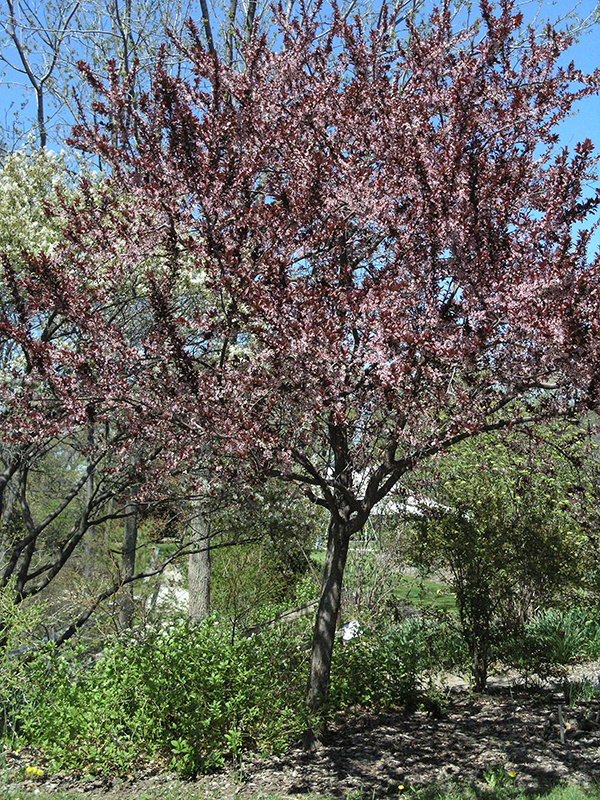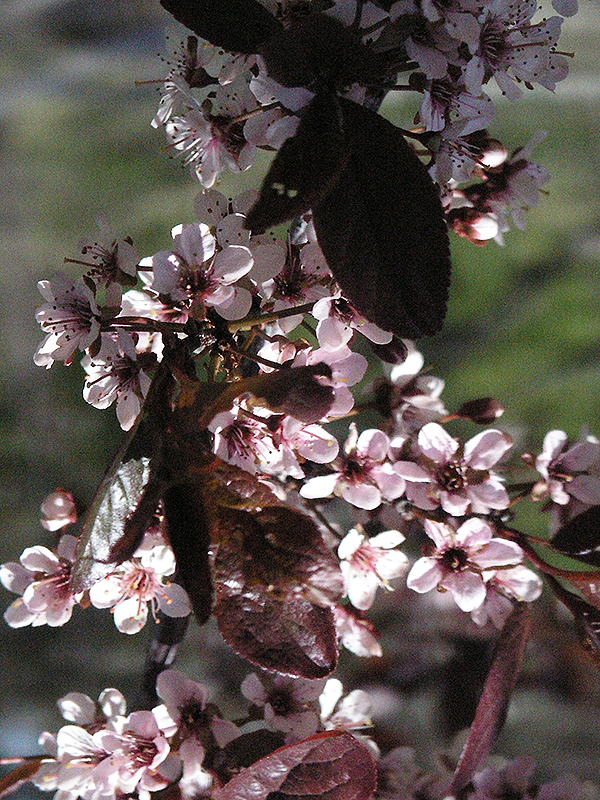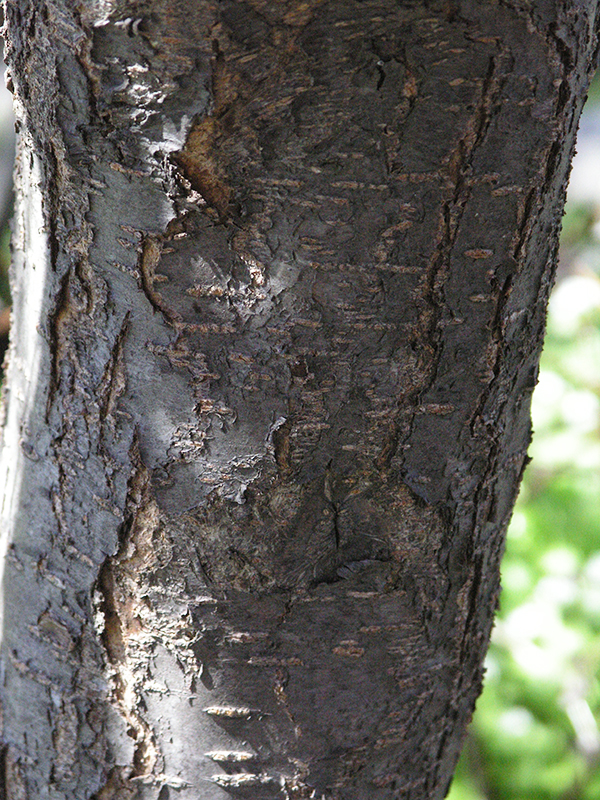| General Description | The hardiest of the purple leaf types. The plant will be in full bloom in the middle of April. |
| ID Characteristic | Small deciduous tree, with alternate leaf arrangements as well as serrated leaf margins. It has a rounded canopy with pink flowers that emerge in the early spring.
|
| Shape | Densely rounded |
| Propagation | Prunus seeds have an embryo dormancy. A period of after ripening of about 2-3 months under 40 degrees F is required. NAA may be more effective then IBA, but use IBA and test with NAA to be safe. |
| Cultivation | Transplant bare root or container grown products in the spring. Any average soil will do; however, it must be well drained. Plant in full sun and prune after flowering. |
| Pests | Very susceptible to pests and diseases. Among the worst include aphids, borers, tent caterpillars, cankers and leaf spots.
Plum Pox:
Symptoms may be confused with other diseases/disorders such as nutrient deficiencies or pesticide injuries. PPV symptoms can occur on leaves, flowers and/or fruit. Faint yellow rings or lines may be found on the leaves. PPV generally does not cause plant mortality however, can reduce the plant productivity and longevity.
How to Reduce the Spread and Impact of PPV:
1. Propagate vulnerable Prunus trees and shrubs outside of the affected area
a. Isolation is important to protect clean plants from future spread of the disease.
b. Propagating and growing vulnerable plants away from the virus-infected area reduce the likelihood of the disease spreading any further. This should be as far away from the quarantined area and any potential sources of the virus.
2. Propagate Prunus plants with virus-free Budwood and Rootstock from virus tested mother trees
a. This eliminates the propagation link for viral diseases.
3. Inspect vulnerable Prunus for symptoms
a. All Prunus shrubs and trees should be visually inspected for symptoms at lease twice per year and conducted by trained personnel familiar with the virus.
b. Any plants found to be infected should not be moved or sold and must be reported to the Canadian Food Inspection Agency immediately.
c. Inspections should not be conducted in periods of hot weather (temperatures over 30˚C).
4. Manage aphid vectors
a. Aphids are extremely attracted to suckers (vegetative shoots at the base of the tree), these should be removed to avoid aphid colonization, feeding or migration.
5. Plant tolerant and resistant varieties
a. When available, grow plum pox tolerant or resistant Prunus varieties.
|
| Notable Specimens | The Royal Botanical Gardens, Hamilton, Ontario, near the rose garden. |
| Habitat | Horticultural origin. |
| Bark/Stem Description | The bark is thin and easily damaged from mechanical impact. Plants grow mostly upright and they will not droop or slant. They Should grow with a single leader and they have no thorns. The bark is not particularly ornamental.
|
| Flower/Leaf Bud Description | Buds are sharp, pointed, and terminal. They are medium sized. |
| Leaf Description | Simple type leaves with serrated margins and alternate arrangements. Length of the leaf blades are 2-4”. |
| Flower Description | Produces white to pale pink flowers. Bloom time is in April. Flowers are very fragrant as well as ornamental. |
| Colour Description | Dark brown bark with red and purple leaves and white to pale pink flowers. The leaves are purple in the autumn.
|
| Texture Description | Smooth bark on the branches, medium to rough bark on the trunk, as well as smooth leaves.
|


